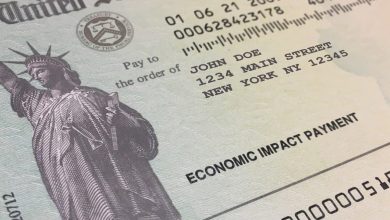U.S. National Debt Surpasses $38 Trillion for the First Time
Rapid debt growth raises concerns over fiscal sustainability, interest costs, and the long-term economic outlook.

In a development highlighting the deep financial challenges facing the United States, the national debt has surpassed $38 trillion for the first time in history, just two months after reaching $37 trillion. This milestone comes as the government continues to deal with the aftermath of the second-longest federal shutdown in U.S. history, amid intense political debates over spending priorities and financial reform.
The new figure represents the fastest pace of public debt growth in a single year outside of extraordinary spending periods during the COVID-19 pandemic. Economists and analysts have issued broad warnings regarding the sustainability of current fiscal policies, their impact on economic stability, borrowing costs, and the future financial burden on upcoming generations of Americans.
According to Treasury Department data, debt rose gradually from $34 trillion in January 2024 to $35 trillion in July, $36 trillion in November, $37 trillion in August 2025, and finally $38 trillion in October — an increase of $1 trillion in just 60 days. The Congressional Joint Economic Committee estimated that debt has grown at a rate of approximately $69,714 per second over the past year.
U.S. Deficit Falls, but Debt Concerns Persist
Treasury Secretary Scott Bessent stated that the federal deficit from April to September totaled $468 billion, the lowest since 2019. He emphasized that the Trump administration reduced the deficit by about $350 billion compared to the previous year through spending cuts and revenue increases, claiming that “President Trump is putting the U.S. financial system on solid ground, while Democrats are attempting to undermine this progress through the government shutdown.”
It is important to distinguish between the deficit and the national debt: the deficit represents the gap between spending and revenue in a single fiscal year, while the debt is the cumulative total of deficits over the years.
Despite administration assurances, economists warn that the continuing rise in debt threatens to increase interest obligations, which have become the fastest-growing item in the federal budget. Maya McGuinness, chair of the budget committee, noted that the country “has become almost accustomed to its fiscal imbalance,” adding that politicians are ignoring core issues such as Social Security and Medicare reform, which could face funding shortfalls within seven years.

Debt Levels Raise Alarms Over U.S. Fiscal Responsibility
Michael Peterson, president of the nonpartisan Peterson Foundation, cautioned that reaching this level of debt during a government shutdown is “evidence that lawmakers have failed to fulfill their basic responsibilities.” He pointed out that the U.S. spent $4 trillion on interest payments over the past decade and is projected to spend $14 trillion over the next decade, negatively impacting both public and private investments.
Policymakers now face increasing pressure to implement a long-term fiscal reform plan, as challenges mount in funding social programs and defense. The debt ceiling debate is expected to dominate political and economic discussions in the coming months, with warnings that continuing on this path could place the U.S. economy at risk of an unprecedented financial confidence crisis.



